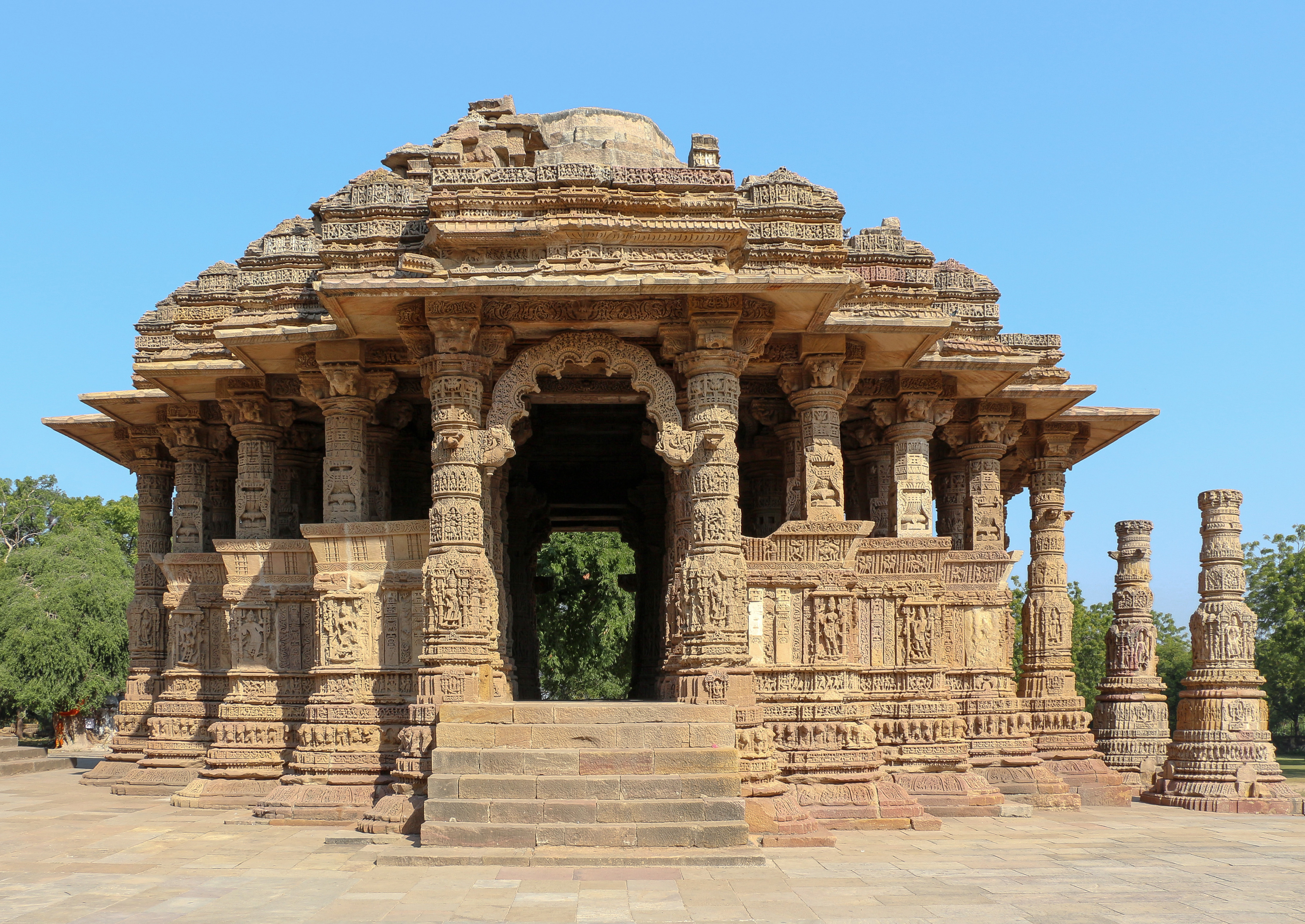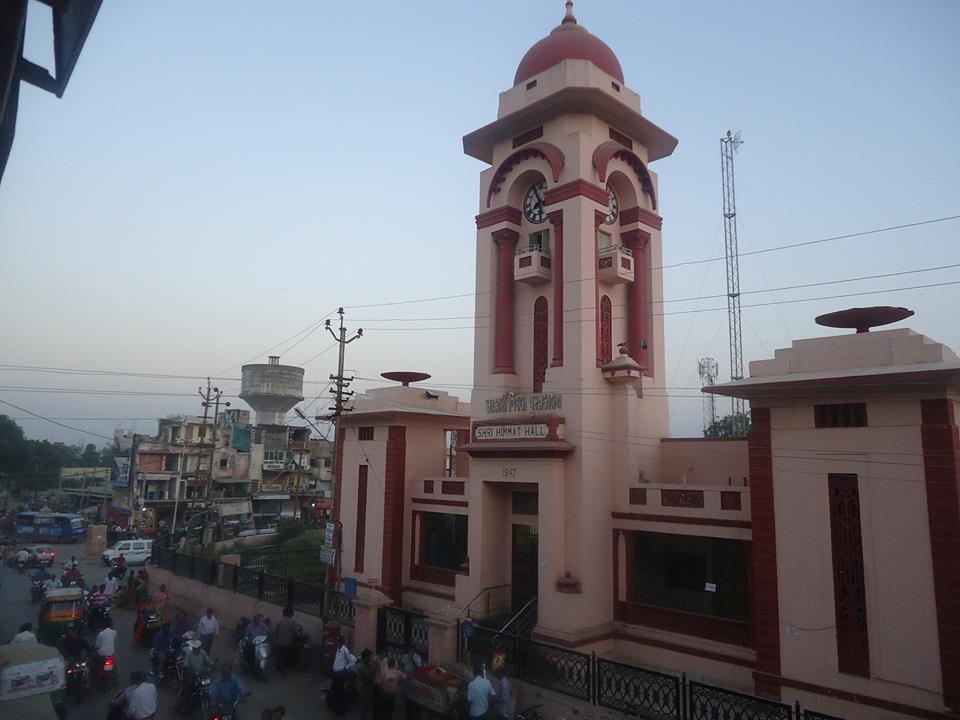|
Gujarat State Road Transport Corporation
Gujarat State Road Transport Corporation, abbreviated GSRTC, is a Government State Transport Undertaking of Gujarat for passengers facilitating with road public transport in moffusil / city services. GSRTC operates within the state of Gujarat, India and neighboring states. It has a fleet of 8703 buses. Overview GSRTC has been incorporated since 1 May 1960 with 7 divisions, 76 depots and 7 divisional workshops, which has been expanding. The public undertaking is covering 98% of the villages and 99% population of Gujarat in addition to plying to major cities of the country (in long-distance routes). Infrastructure across the state: * 16 divisions * 125 depots * 263 bus stations * 1554 pickup stands Daily operation with: * 40,000 employees * 8703 buses * 8500 schedules * 47462 trips * 32.50 lakhs km * 25 lakhs passengers (99.5%) of population * It covers 18,551 (99.33%) villages of Gujarat out of total 18,676 villages * It has iconic one-of-its-kind Bus Ports in 6 major cities ... [...More Info...] [...Related Items...] OR: [Wikipedia] [Google] [Baidu] |
Government Of Gujarat
The Government of Gujarat, also known as Gujarat Government, is the supreme governing authority of the Indian state of Gujarat and its 33 districts. It consists of an executive of the legislators appointed by the Governor of Gujarat, a judiciary and of a publicly elected legislative body. Like other states in India, the head of state of Gujarat is the Governor, appointed by the President of India on the advice of the Central (Union) government. The governor's role is largely ceremonial, but the governor considers the legislative composition and appoints the Chief Minister, who is the main head of government, as chair of the Council of Ministers of Gujarat and is vested, in some instances alone but as to most executive powers by Council consensus with virtually all of the executive powers. Gandhinagar, the capital of Gujarat, houses the relevant Vidhan Sabha (also known as the Gujarat Legislative Assembly) and the secretariat. The Gujarat High Court in Ahmedabad, has jurisdicti ... [...More Info...] [...Related Items...] OR: [Wikipedia] [Google] [Baidu] |
Shetrunjaya
Shatrunjaya or Shetrunjaya ("place of victory against inner enemies") originally Pundarikgiri), are hills located by the city of Palitana, in Bhavnagar district, Gujarat, India. They are situated on the banks of the Shetrunji River at an elevation above sea level. These hills have similarities to other hills where Jainism, Jain temples have been built in Bihar, Gwalior, Mount Abu and Girnar. The Jain's sacred hill of Shatrunjaya have 865 temples atop itself. The hills were sanctified when Rishabha, the first tirthankara of Jainism, gave his first sermon on the top of this hill. The ancient history of the hills is also traced to Pundarika Swami, a chief Ganadhara and grandson of Rishabha, who attained Nirvana/Moksha here. His shrine located opposite to the main Adinath temple, built by Son of Rishabha, Bharata. There are several alternate spellings, including Śatruñjaya, Satrunjaya, Shetrunja, and Shetrunjo. Shatrunjaya was also known as Pundarikgiri as Pundarik was said to ha ... [...More Info...] [...Related Items...] OR: [Wikipedia] [Google] [Baidu] |
Nadiad, Gujarat
Nadiad is a city in the state of Gujarat, India and the administrative centre of the Kheda district. The city is managed by the Nadiad Municipality. It is known for the Santram Mandir, the Mai Mandir,Shri Mai Mandir maimandir.org. the historic Swaminarayan temple built in 1824,Temples in Nadiad nadiad.in. and the Anand and Hari Om Ashram. Nadiad is also where Shrimad Rajchandra composed Shri Atmasiddhi Shatra, a 142 verse spiritual treatise in 1895. Nadiad is located away from [...More Info...] [...Related Items...] OR: [Wikipedia] [Google] [Baidu] |
Modhera
Modhera is a village in Mehsana district of Gujarat, India. The town is well known for the Sun Temple of Chaulukya era. The town is located on the bank of Pushpavati river. History The town was known as Dharmaranya during Puranic age. It is believed that Rama had performed yagna here to cleanse the sin of killing Brahmin Ravana. He had built ''Modherak'' which was later known as Modhera. The Sun Temple was built during the reign of Bhima I of Chaulukya dynasty in 1026-1027 (Vikram Samvat 1083). Gyaneshwari stepwell located in village belongs to 16-17th century. It has a shrine at the first pavilion of the stepwell instead of usual at the end. Modheshwari Mata Temple is located in the village. Economy Electricity Modhera became the first "solar village" of India. The village meets its complete electricity requirements by a 6 MW solar plant with a 15 MWh battery energy storage system on land located from the village. A total of 1300 out of the 1600 houses in the village i ... [...More Info...] [...Related Items...] OR: [Wikipedia] [Google] [Baidu] |
Mehsana
Mehsana (), also spelled Mahesana, is a city and municipality in Mehsana district, in the Indian state of Gujarat. Established in 14th century, the city was under Gaekwads of Baroda State from 18th century to the independence of India in 1947. The municipality was established in 1919–20. The town has population of about 185,000. Dairy, oil and natural gas are major industries while there are several small and medium enterprises in the city. History Jaisinh Brahmabhatt describes the following legend in his poems from 1932 AD: Mehsana was established by Mehsaji Chavda, Rajput heir of the Chavda dynasty. He constructed the ''Torana'' (arc gate) of the city and a temple dedicated to Goddess Toran on Bhadrapad Sud 10 in Vikram Samvat 1414 (1358 AD). The legend is corroborated in ''Pragat Prabhavi Parshwanath athva Parshwanathna Chamatkaro'' published in Vikram Samvat 1909 (1823 AD) by Manilal Nyalchand Shah who also mentioned in it that Mehsaji built a ... [...More Info...] [...Related Items...] OR: [Wikipedia] [Google] [Baidu] |
Junagadh
Junagadh () is the headquarters of Junagadh district in the Indian state of Gujarat. Located at the foot of the Girnar hills, southwest of Ahmedabad and Gandhinagar (the state capital), it is the seventh largest city in the state. Literally translated, Junagadh means "Old Fort". After a brief struggle between India and Pakistan, Junagadh voted to join India in a plebiscite held on 20 February 1948. It was a part of Saurashtra state and later Bombay state. In 1960, in consequence of the Maha Gujarat movement, it became part of the newly formed Gujarat state. History Early history As per the legend, the founder of the Ror Dynasty Raja Dhaj, Ror Kumar, alias Rai Dyach, ruled over the principality of Jhunagarh in the fifth century BC. An early structure, Uparkot Fort, is located on a plateau in the middle of town. It was originally built in 319 BCE during the Mauryan dynasty by Chandragupta. The fort remained in use until the 6th century, when it was abandoned for abo ... [...More Info...] [...Related Items...] OR: [Wikipedia] [Google] [Baidu] |
Dwarka
Dwarka () is a city and a municipality of Devbhumi Dwarka district in the state of Gujarat in Western India. It is located on the western shore of the Okhamandal Peninsula on the right bank of the Gomti river at the mouth of the Gulf of Kutch facing the Arabian Sea. Often identified with the Dwarka Kingdom, described in the ''Bhagavata Purana'' as the ancient kingdom of Krishna and is believed to have been the first capital of Gujarat. Dwarka has the Dwarkadhish Temple dedicated to Krishna, which is one of four sacred Hindu pilgrimage sites collectively called the Chardham, which were founded by Adi Shankaracharya (686–717 AD) at the four corners of the country, was established as a monastic center and it forms part of the Dwarka temple complex. Dwarka is also one of the seven-most-ancient religious cities (Sapta Puri) in India. Dwarka is part of the "Krishna pilgrimage circuit" which includes Vrindavan, Mathura, Barsana, Gokul, Govardhan, Kurukshetra and Puri. ... [...More Info...] [...Related Items...] OR: [Wikipedia] [Google] [Baidu] |
Jamnagar
Jamnagar () is a city located on the western coast of India in the state of Gujarat of Saurashtra region. It is the administrative headquarters of the Jamnagar district and the fifth largest city in Gujarat. The city lies just to the south of the Gulf of Kutch, some west of the state capital, Gandhinagar. India's largest private company, Reliance Industries, has established the world's largest Oil Refining and Petrochemicals Complex in Jamnagar district. History Nawanagar was founded by Jam Rawal in 1540 as the capital of the eponymous princely state. Jamnagar, historically known as Nawanagar (the new town), was one of the most important and the largest princely states of the Jadejas in the Saurashtra region.vIt was a thirteen-gun salute state. According to historical records, Bahadur Shah, Sultan of Gujarat bestowed upon Jam Lakhaji twelve villages in recognition of his role in the siege of Pawagadh. Shortly after he took possession of the villages, Jam Lakh ... [...More Info...] [...Related Items...] OR: [Wikipedia] [Google] [Baidu] |
Sabarkantha District
Sabarkantha district is one of the 33 districts of Gujarat state of India and is located in the northeastern part of the state. The administrative headquarters of the district are located in Himatnagar. Geography Sabarkantha District is bounded by Rajasthan state to the north and northeast, Banaskantha district and Mehsana district to the west, Gandhinagar district to the south and Aravalli district to the southeast. It is spread across an area of 5390 km2. It has a gender ratio of 950 females per 1000 men, and the literacy rate for the district is 76.6%. History During the Western Satrap rule, the region was known as ''Shwabhra'' ( gu, શ્વભ્ર). The region was under rule of Satrap Rudradama in 150 A.D. as indicated in Ashoka's Major Rock Edicts at Junagadh. The river of the region is named as ''Shwabhravati'' which is now known as Sabarmati River. The region is also named in auxiliary text ''Gaṇapāṭha'' of Pāṇini's grammar work, ''Aṣṭādhyāyī''. ... [...More Info...] [...Related Items...] OR: [Wikipedia] [Google] [Baidu] |
Himmatnagar
Himatnagar or Himmatnagar is a municipality in Sabarkantha district in the Indian state of Gujarat. It is the administrative headquarters of the district. The city is on the bank of the river Hathmati. History Himatnagar was founded in 1426 by Ahmed Shah I of Gujarat Sultanate and named it Ahmednagar after himself. He founded the town to keep Raos of Idar State in check. In 1658, Aurangzeb became emperor and reintroduced jizya. Through his ferman of 1665 he prohibited Jains and Hindus from closing their shops on 'Pachusan' ( paryushan), last day of the month and eleventh day; ordered that arrangements be made to ensure that Kolis of Himmatnagar do not disturb Muslims when they recite their Friday prayers. When the Rao dynasty took Idar in 1728, Ahmednagar soon fell into their hands. After the death of Maharaja Shivsing, in 1792, his brother Sangramsing took Ahmednagar and the country around; and, in spite of the efforts of his nephew Gambhirsing, became an independent chi ... [...More Info...] [...Related Items...] OR: [Wikipedia] [Google] [Baidu] |
Pavagadh
Pavagadh is an ancient Triassic Period location with Enriched History from periods of Treta Yuga and Dvapara Yuga. In present day, Pavagadh is a municipal operated region in Panchmahal district about away from Vadodara in Gujarat state in western India. It is known for a famous Mahakali temple which draws thousands of pilgrims every day. It is a tribal area populated predominantly by the Rathwas. The area of this locality Champaner-Pavagadh Archaeological Park was inscribed by UNESCO as a World Heritage Site in 2004. History It is said that king Vanraj Chavda established Champaner at the foot of Pavagadh in fond memory of his wise minister Champa. Later, the Patai Raval family ruled it and took care of the boundary. The folk tales say that Mahakali assumed the form of a woman and danced in a Garba during Navaratri. The last Patai, Jaisinh watched her with dirty looks. The deity became angry at Jaisinh and cursed him that the town will fall. The Muslim emperor of Gujarat, Ma ... [...More Info...] [...Related Items...] OR: [Wikipedia] [Google] [Baidu] |










